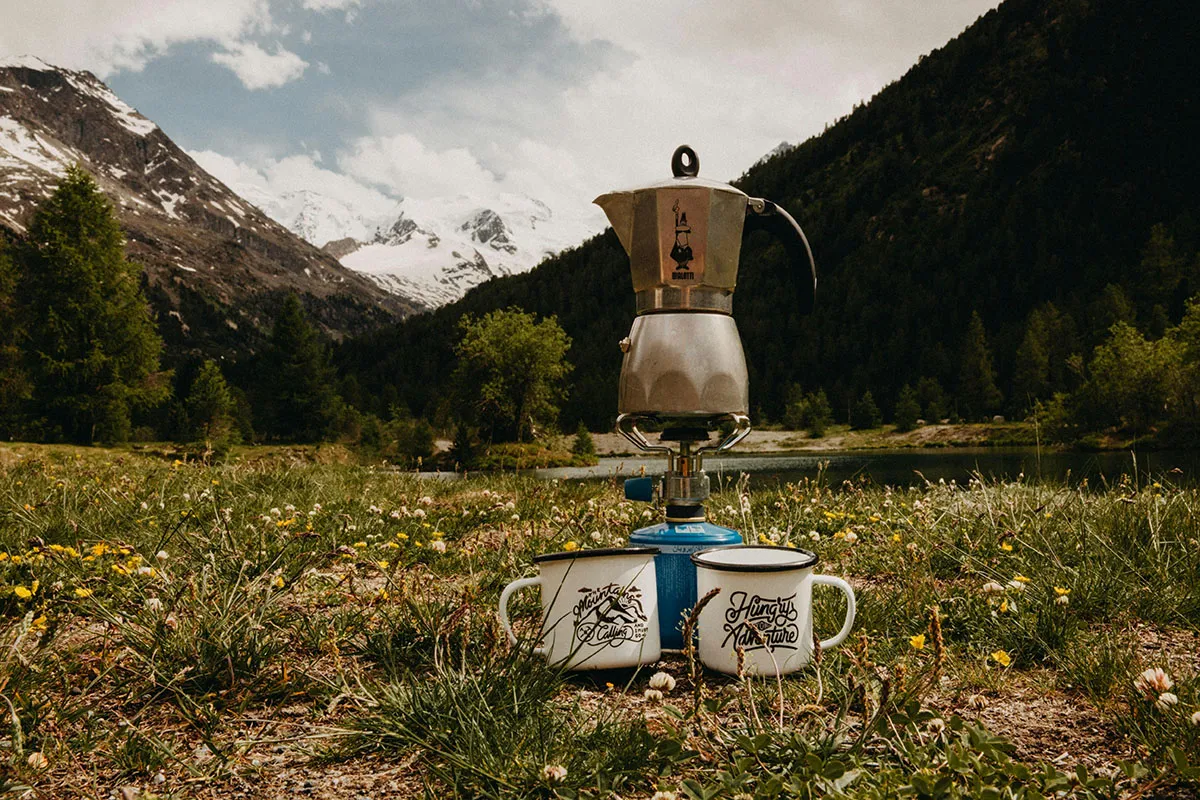

Backpacking is one of the most epic adventures you can undertake but what happens when you’re on the trail for days? You have to eat! Better to eat from a stove that actually works than to struggle for hours trying to make a fire from scratch. But don’t be fooled, not all stoves are equal.
Videos by Outdoors
If you’ve ever had a stove with a sad, weak flame, a stove that just didn’t seem to work, the heaviest stove of all time, or a stove that took a million hours to boil water, then you might need to upgrade to a professional, light stove. Don’t camp without it.
The best ultralight backpacking stove is the Soto WindMaster Stove. Lightweight, simple, and made to hold pots of any size, this stove takes the cake.
But that’s not all: we’ve got picks for the best stove on a budget, the best for coffee lovers, the best for simmering control, the best stove that comes with a cooking kit, and more. Read on to see our picks for the best backpacking stoves for 2024.
This post contains affiliate links. Outdoors.com may earn a commission when you make a purchase through these links. Thank you for your support.
The Best Ultralight Backpacking Stoves
- Best Overall: Soto WindMaster Stove
- Best Budget: MSR PocketRocket 2
- Best Kit: MSR PocketRocket Deluxe Stove Kit
- Best for Coffee Lovers: Jetboil Flash Java Kit Cooking System
- Best for Simmering Control: Jetboil MiniMo Cooking System
- Best for Fuel Versatility: MSR Whisperlite Universal
Best Overall: Soto WindMaster Stove
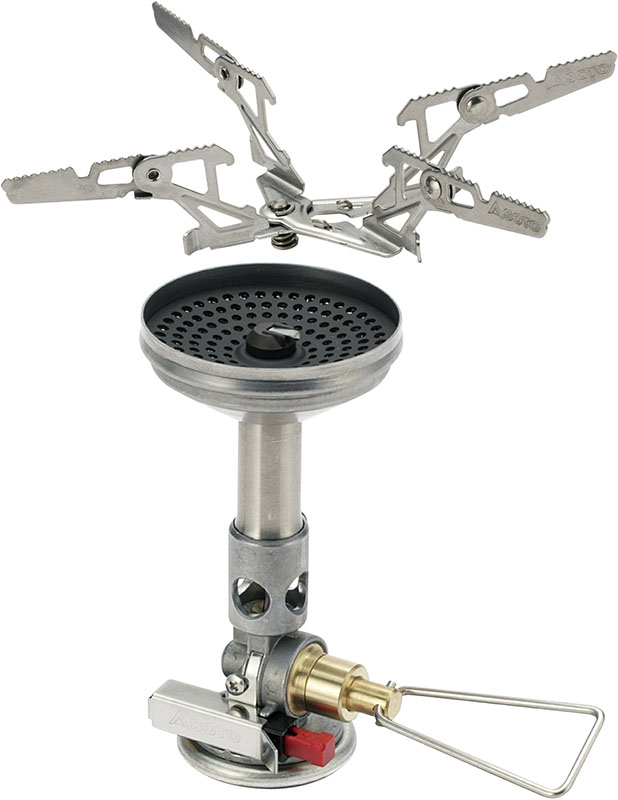
Specs:
- Fuel Type: Canister
- Fuel: Isobutane-propane
- Average Boil Time (1L): 4 min. 2 sec.
- Weight: 3.1 ounces
The Soto WindMaster is the best overall backpacking stove because its innovative design and pot supports are great for cooking, even in windy conditions, and it excels in performance compared to liquid fuel remote canister stoves.
It’s insanely lightweight and simple, perfect for backpackers looking to build their cook set ad-hoc. Unlike most liquid fuel stoves that require priming and maintenance, the WindMaster has a piezoelectric igniter and fuel-efficient burner.
A non-integrated canister stove is more likely to leave the flames exposed than it should which can cause problems at high temperatures. Soto aimed to solve this problem by developing a clever solution called WindMaster.
The key difference in the pot supports compared to the one-piece MSR, the Soto has fewer clamping arms and allows a pot that sits closer to the flame. Plus the burners are designed with a concave shape which creates a wind-screen to protect the flame.
While liquid fuel stoves may offer longer burn times, we prefer the WindMaster’s compact size, as it’s better for backpackers looking to minimize weight.
The WindMaster is the best stove for backpackers seeking the lightest stove that has the best pot support. It’s tiny, packable, and fast to use, making it an essential piece of backpacking gear for those looking to keep their pack weight low without sacrificing space or stove performance.
Best Budget: MSR PocketRocket 2
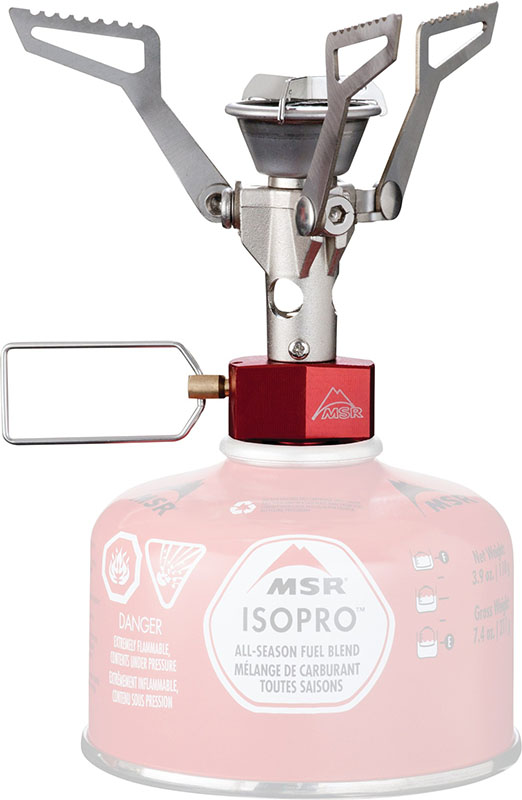
Specs:
- Fuel Type: Canister
- Fuel: Isobutane-propane
- Average Boil Time (1L): 3 min. 30 sec.
- Weight: 2.6 ounces
The compact MSR Pocketrocket 2 has gained legend in backpacking circles for good reason. The screw-on stove provides great simmer control, it weighs only 2.6 ounces, occupies very little room, and boils fast. The fact it only costs $50 makes it very popular.
This stove is a simple, lightweight option for beginner hikers not wanting to spend a lot of money but get a great stove. Despite its small size, the PocketRocket 2 has impressive power, boiling quickly.
It claims sturdy pot supports provide stability for larger pots and pans, enhancing cooking capabilities even in challenging conditions such as cold weather, but we find the Soto WindMaster Stove outperforms in stability.
While lacking a piezo igniter, the PocketRocket 2 remains easy to use and reliable, with a simple setup process. It doesn’t matter if you’re just heating water or cooking up a delicious dehydrated meal, this affordable backpacking stove is a great choice. Being so small and packable, it’s a solid choice for solo backpackers or beginner hikers looking to save weight.
Best Kit: MSR PocketRocket Deluxe Stove Kit
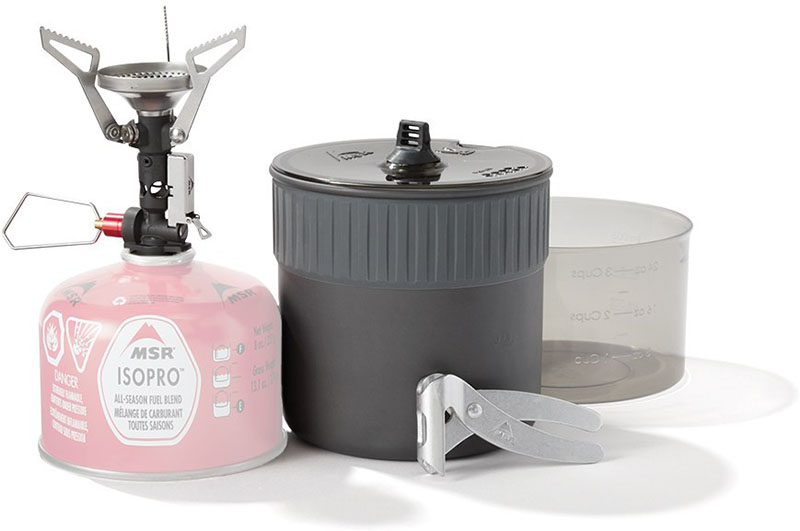
Specs:
- Fuel Type: Canister
- Fuel: Isobutane-propane
- Average Boil Time (1L): 3 min. 20 sec.
- Weight: 13.1 ounces
The MSR PocketRocket Deluxe backpacking stove emerges as a top choice for outdoor cooking with its efficient performance and convenient design. Unlike some multi-fuel stoves or larger stove systems, the PocketRocket Deluxe stands out as a compact and efficient stove with fuel-efficient operation so you can make the most of their fuel supply and not waste fuel in the wilderness.
Featuring a piezo igniter and integrated pot, the PocketRocket Deluxe makes cooking outdoors easy. While it may not be as robust as wood stoves or integrated canister stove systems, it excels in its simplicity and effectiveness in boiling and cooking fast.
This compact stove is easy to pack and carry, perfect for backpackers looking to minimize weight and space in their pack. If you want extra support you may wish to buy a canister stand as well.
Despite some concerns about the reliability of the piezo igniter and the stability of the pot, this stove delivers a consistent performance.
Best for Coffee Lovers: Jetboil Flash Java Kit Cooking System
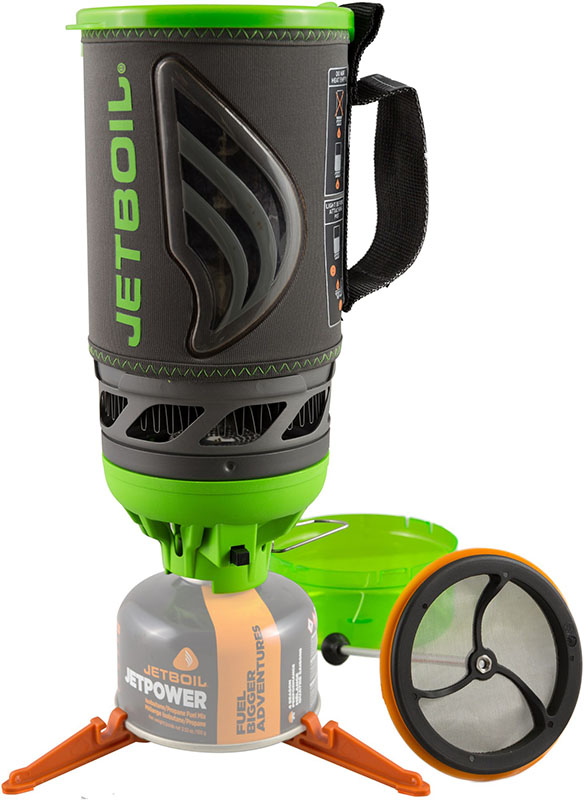
Specs:
- Fuel Type: Canister
- Fuel: Isobutane-propane
- Average Boil Time (1L): 3 min. 20 sec.
- Weight: 13.1 ounces
Many backpackers use a Jetboil for boiling water as they prefer a more convenient way of cooking dehydrating food as it has an integrated pot. It’s an excellent solution for fast dinners with an integrated canister. The Jetboil is perfect for fast cooking with an integrated insulation system. It attaches directly to the stove via a heat exchanger.
This stove is efficient and wind-resistant and provides optimum heat resistance. It is possible to boil water in about three minutes. It claims two cups of water in 100 seconds. Plus it can brew coffee with the French press lid, allowing campers to enjoy freshly brewed coffee on the trail without extra equipment.
Its rapid boiling times and user-friendly features like pot supports and a pressure regulator ensure quick and hassle-free meal preparation, even with large pots.
A key benefit of the Flash Java Kit is its fuel efficiency, making it suitable for extended outdoor adventures where fuel access may be limited. Its longer-lasting fuel usage compared to other options makes it better for backpacking trips. The compact and sturdy design with an easily attached fuel bottle is ideal for camping cookware to withstand rugged conditions.
Best for Simmering Control: Jetboil MiniMo Cooking System
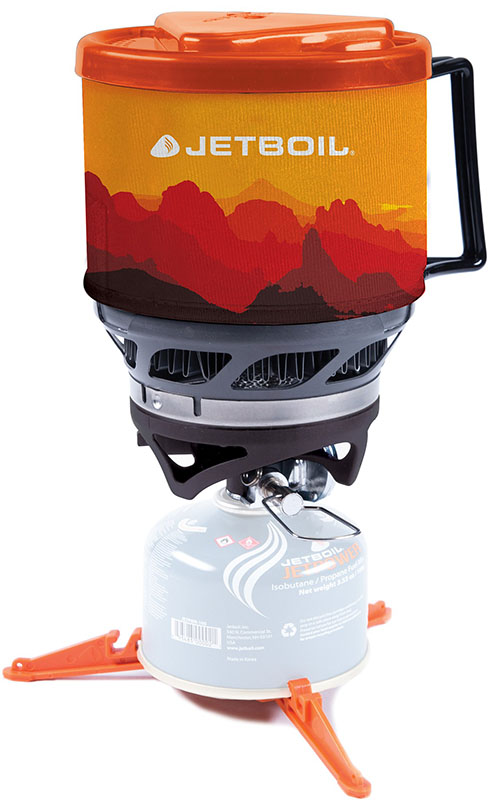
Specs:
- Fuel Type: Canister
- Fuel: Isobutane-propane
- Average Boil Time (1L): 4 min. 30 sec.
- Weight: 14 ounces
Anyone who has tried a Jetboil knows it’s great at jetting and boiling, but almost too great. The Jetboil MiniMo Cooking System is the solution to that.
For canister stoves, Jetboil is regarded as an all-in-one system that boils water quickly, but MiniMo comes up with several tricks too with great fuel valve control. The MiniMo stove is an upgrade to the JetBoil standard with an improved temperature and pressure regulator, allowing better control over the flame.
The 1-liter pot has a safety handle padded with Neoprene sleeves and its short and sturdy construction gives stability over the flame and serves as a bowl for the meal to cook.
This stove is a top contender for extended trips where extra fuel canisters may be necessary. It even has features to reduce the risk of carbon monoxide poisoning, so it’s safe to cook if you need to use it inside your tent in a snowstorm.
For a canister stove, the MiniMo is a great lightweight stove that is easy to use. Unlike some integrated canister stoves, the MiniMo has great fuel efficiency and boils quickly; it is still a Jetboil after all. The piezoelectric igniter makes it easy to light, a step up from the MSR PocketRocket, which does not self-ignite.
It has a wider pot design too and the temperature control means it can actually simmer, so naturally your food will taste better. Despite building an integrated stove, the MiniMo is still very lightweight, making it great for backpackers.
Best for Fuel Versatility: MSR Whisperlite Universal
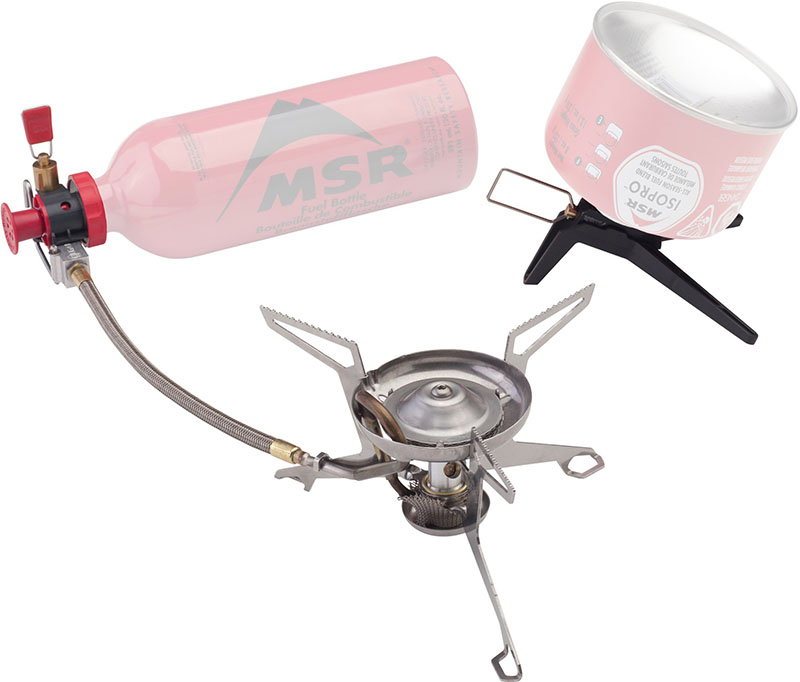
Specs:
- Fuel Type: Liquid, Canister
- Fuel: Isobutane-propane, White Gas, Auto, Kerosene
- Average Boil Time (1L): 3 min. 30 sec. (white gas) / 3 min. 45 sec. (isobutane)
- Weight: 13.7 ounces
For those addicted or needing to use different liquid fuel stove types, the MSR Whisperlite Universal backpacking stove is for you. You can use it with nearly anything, compatible with both liquid fuel and canister gas. This versatility makes it a great choice for international expeditions or travels where canisters may be limited.
While not everyone is a fan of liquid gas stoves, they are durable and handy to use since you can fuel anywhere and they are great for cooking larger meals since they’re super powerful. You can use multiple liquid fuel models and types, including white gas, kerosene, and unleaded gasoline, even in cold weather. The MSR Whisperlite Universal has a decent windscreen and can still boil and simmer, even if it’s windy.
However, this liquid fuel stove has some drawbacks, it can be a bit annoying to figure out how to use it, and changing fuel types will require some adjustment; the stove works differently depending on what fuel you use.
Reviews mention a slower boil time with canisters. It’s still very lightweight, the weight not including the spent fuel canisters, and its rugged durability and versatility make it a compelling choice for extended expeditions or remote backpacking trips.
Overall, the MSR Whisperlite Universal stands out as a dependable cooking stove for international trips or trips where not every fuel canister may be available.
Buyer’s Guide: How to Choose an Ultralight Backpacking Stove
When choosing a backpacking stove, focus on weight, what type of fuel it uses, how easy it is to use, and how fast it can boil water.
Types of Stoves
Canister stoves are dominant in backpacking. Their easy and intuitive design makes them very popular with hikers to replace the fuel and start cooking with precise flame control. The stoves generally are inserted into the fuel cans that hold isobutanes and propane.
Simply connect the fuel canister with the fire. Aside from being incredibly clean, they heat easily at high speed. Canister-type stoves range widely from lightweight or simple to all-in-one systems. Canisters can be reused but can cause additional waste if not. In cold winters they tend to freeze up and provide insufficient fire.
Alternative-fuel stoves are good options to take on backpack trips and for emergency use. Alcohol stoves are lightweight and easy to take refillable fuel bottles along with denatured alcohol.
White gas stoves are known for their performance in cold weather and high altitudes. They have a high heat output, making them better for quickly boiling water and cooking in extreme weather.
White gas stoves can save you money in the long run, as white gas fuel tends to be less expensive than a standard canister. Wood-burning stoves and solid-fuel tablet stoves are also options but may be less convenient.
Liquid fuel stoves run on white gas, but you may also use auto fuel like kerosene petrol or jet fuel. These are ideal for trips abroad. They are somewhat more complicated to use and need maintenance. However, they are very stable when the temperature is low.
They are often preferred for longer expeditions where access to fuel may be limited.
Fuel Efficiency & Average Boil Time
It’s hard to assess fuel economy, as it is influenced by several factors when it comes to tested backpacking stoves. Fuel shortages can ruin your trip.
Backpackers should be aware that the fuel efficiency numbers are merely recommendations for travel planning. Manufacturers operate in controlled environments that differ greatly from real-world backpacking.
The boiling time of each stove can vary between models. These specifications help make a decision. When preparing mostly dehydrated backpacking food (just add water) you will require a small stove with rapid cooking times.
If you prefer cooking more complicated foods it will be better to buy a stove with improved cooking speed or a wider burner.
Stove Packed Size and Weight
If you count pounds on a lengthy solo trip, you want to check your stove weight and canister weight depending on how much fuel you need if using a canister stove. The stoves listed here weigh about an ounce to two pounds.
Some are small enough to fit in your palm and some require more space. Some people don’t need the smallest stove. Particularly when it comes to camping throughout the year, you can use a four-season stove or one that is more efficient for freezing temperatures.
The Jetboil Flash is larger but lighter than some other canister stoves. Its components integrate well with other components and pack extremely well as it includes a pot, with fuel canisters.
Integrated Stoves vs. Non-Integrated Stoves
The integrated system Jetboil Flash uses is unique as it contains a burner heat exchanger and the pot bonded in a streamlined packaging. This system provides clear advantages in packing and use. The design is very tightly arranged, which allows faster heating with less power consumption. However, a non-integrated stove is more versatile and packs down smaller.
Simmering Ability
Eating well really improves a backcountry excursion. Backpack stoves that have excellent control valve sensitivity and larger burners will increase the temperature distribution at the bottom and will produce better food.
Cooking at Altitude and in the Cold
If you’re traveling at a high altitude, we strongly recommend using a stove made to travel under these conditions. White gasoline or other solid fuels work more efficiently when they are colder. Conversely, canisters depressurize in cold and freezing temperatures and may stop the gas flowing through them to the stove.
Frequently Asked Questions
Is MSR or Jetboil better?
Both MSR and Jetboil are reputable brands known for their quality camping stoves and are comparable in quality. MSR tends to offer a wider range of products with a whole camping setup or just a single stove. Jetboil is renowned for its efficient integrated cooking systems.
Your choice depends on factors like whether you want a stove as a unit or prefer separate contents.
What type of stove is best for backpacking?
A lightweight stove that is easy to use, easy to carry, and will not topple your pots makes the best stove for backpacking. Our top picks include Soto WindMaster Stove, MSR PocketRocket 2, and Jetboil MiniMo Cooking System.
What is the lightest pocket stove?
The MSR PocketRocket 2 is one of the lightest pocket stoves weighing only 2.6 ounces.
What is the lightest fuel for hiking?
Liquidated alcohol stoves offer an excellent solution for ultralight hikers. They’re lightweight, inexpensive, and simple to construct and work extremely well when boiling water. These engines run on many different sources, most often denatured alcohol.
For lightweight hiking, consider using denatured alcohol or isopropanol (commonly referred to as “rubbing alcohol”) as fuel for your liquid fuel alcohol stove. These fuels are lightweight and widely available.
What can I do with used isobutane/propane canisters?
A major disadvantage of using canister stoves is the canister itself: it isn’t easy to dispose of and not very convenient for recycling. There are inexpensive fuel bottle transfer systems. FlipFuel for instance can combine half-used fuel bottles and canisters.
This can help make backcountry excursions easier and safer. FlipFuel is commonly used by manufacturers, but cheaper models are available at Amazon or elsewhere.
How many BTUs do I need for a single backpacking stove?
The number of BTUs (British Thermal Units) you need for a backpacking stove depends on what you’re using the stove for and where (how high of altitude). However, as a general guideline, stoves for backpacking typically range from around 7,000 to 20,000 BTUs per hour.
For solo backpackers or a party of two, a stove with a lower BTU output, around 7,000 to 10,000 BTUs, will work fine for boiling water and cooking small meals.
A stove with a higher BTU output, around 15,000 to 20,000 BTUs, may be better if you have many people to cook for, you might be cooking in bad weather, or you just like your water to boil nice and fast.
What is the difference between a camping stove and a backpacking stove?
Camping stoves are large and heavy and aren’t designed to be carried on your back.
Backpacking stoves are designed to be tiny and easy to carry. They are designed for backpackers and hikers who are trekking through remote areas and carrying all their camping gear on their backs. These stoves are small, lightweight, and easy to set up.
Ultralight stoves are even lighter. Despite being so small, usually less than two pounds, they boil fast and can cook up a meal with no problem. They are less stable, so if you are car camping, purchasing a camping stove probably makes more sense.
The Best Ultralight Backpacking Stove
Finding the right backpacking stove might seem tricky at first, but it’s simple to find the right stove for you if you follow our guide.
The right stove will boil water, fast. You won’t struggle to handle pots, even big ones, while you’re cooking. Choose a stove that uses the fuel type you prefer -whether that is a canister stove or a liquid fuel stove.
The right stove will be the right size for you; some are super small and light, and some are medium-sized and more durable. Always choose a stove that is fuel-efficient since you’ll be lugging around your fuel.
You also want to make sure that your stove works well with your cook pot and works in cold temps, if you’ll be traveling in the cold weather.
Our top pick for the best backpacking stove is the Soto WindMaster Stove. This stove is our favorite for a reason. It’s a reliable stove that can handle a frying pan and it’s so light, you’ll hardly know it’s in your pack.
But no matter whether you’re camping for just a sight or days on the trail, you can’t go wrong with one of our picks for the best ultralight backpacking stoves. See you on the trail!
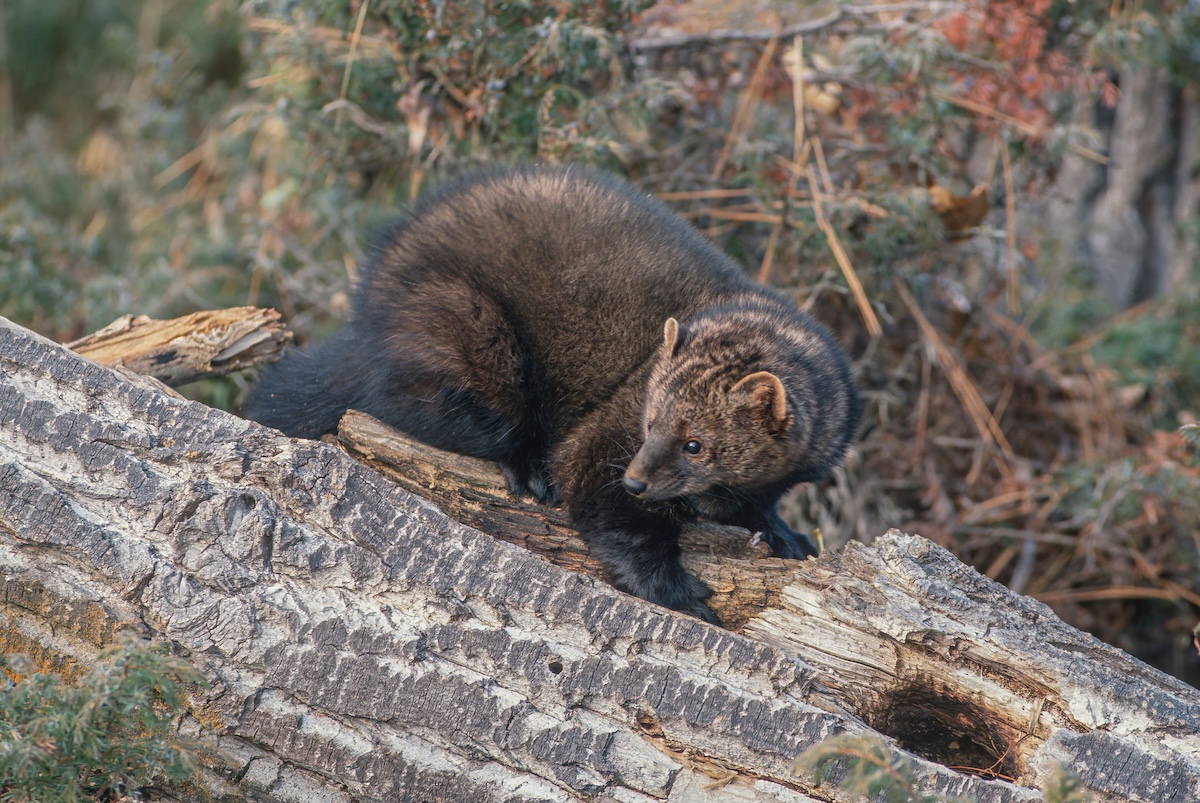

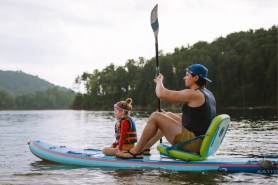
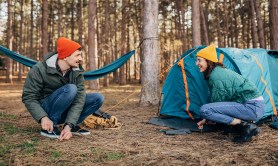
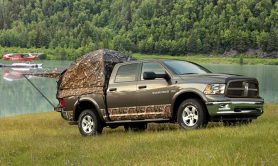

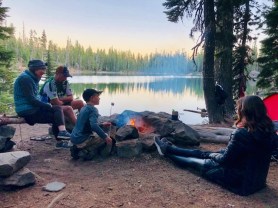
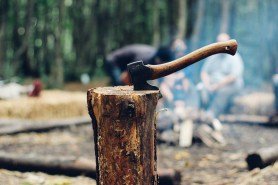
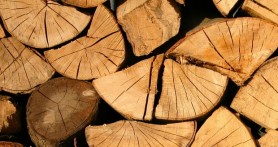
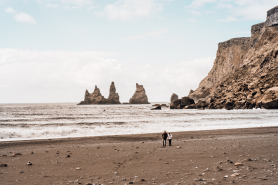
Haven’t you heard of the BRS 3000t!?
That thing is a fraction of the cost and only like 30 grams!
No meths or wood burners!
MSR’s lack of commitment to their heritage designs makes them an extremely poor choice for anyone looking for a long term investment like a hiking stove. The two orphan MSR stoves I own are nice designs and were great performers until I needed rebuilt parts. When I contacted MSR they told me I should buy one of their new stoves because there were no parts for my orphan stoves MADE BY THEM. I call BS to any review calling their product good choices for any application.